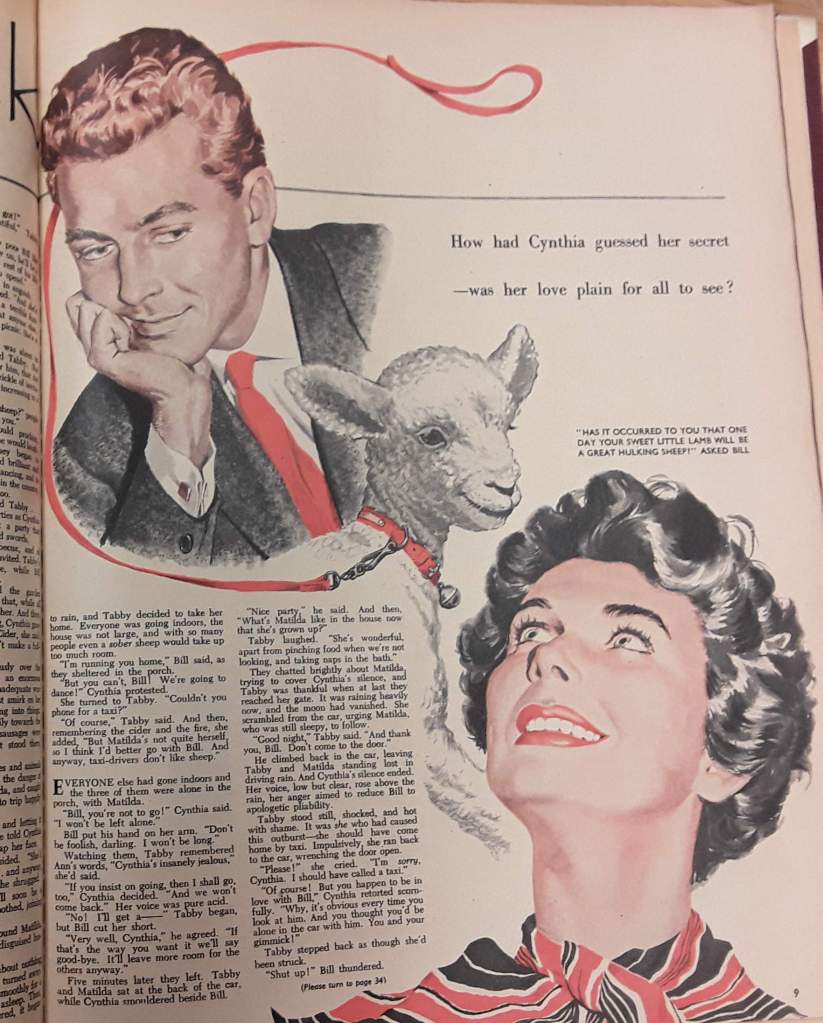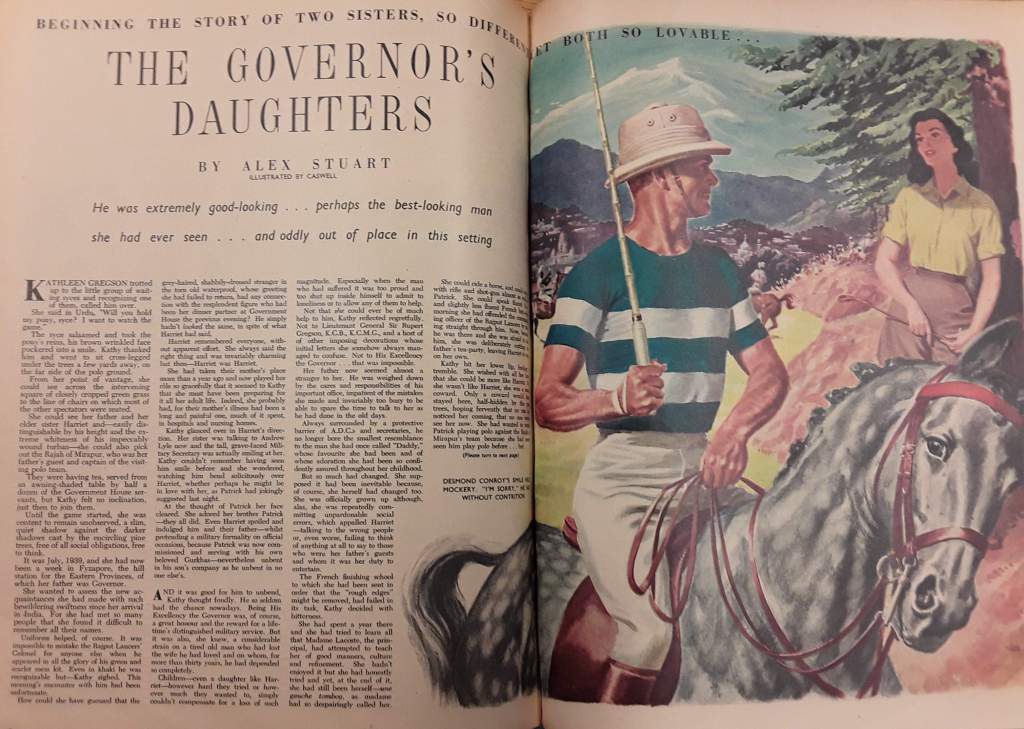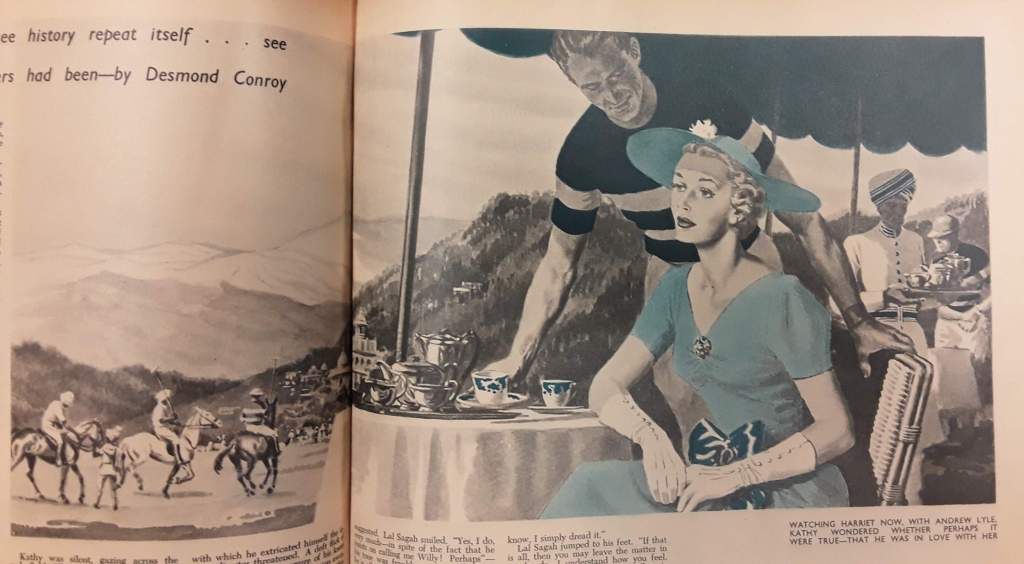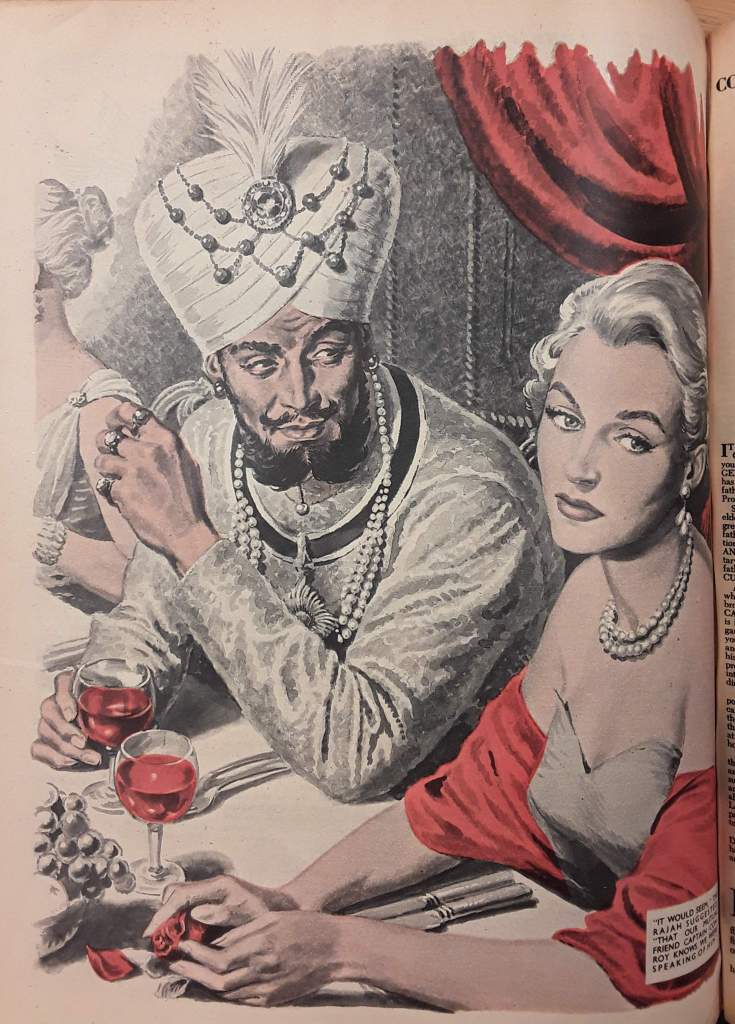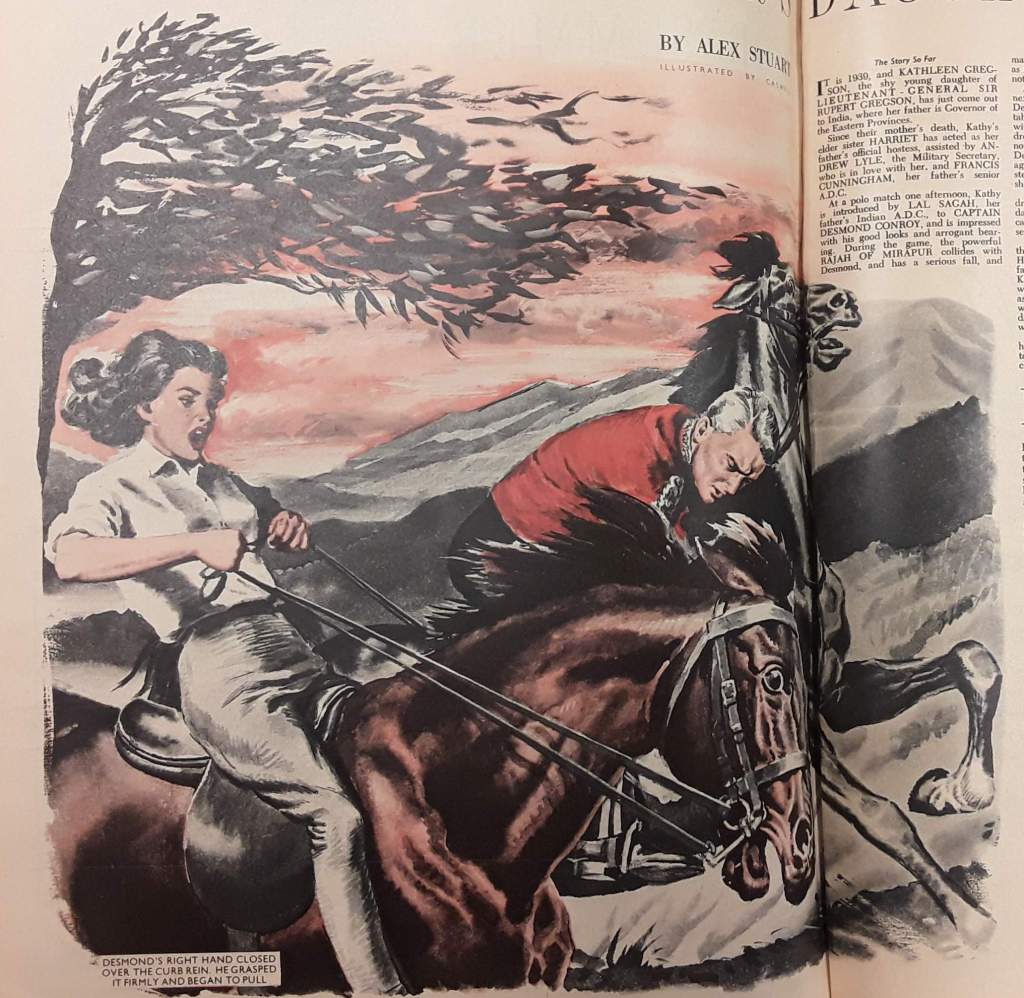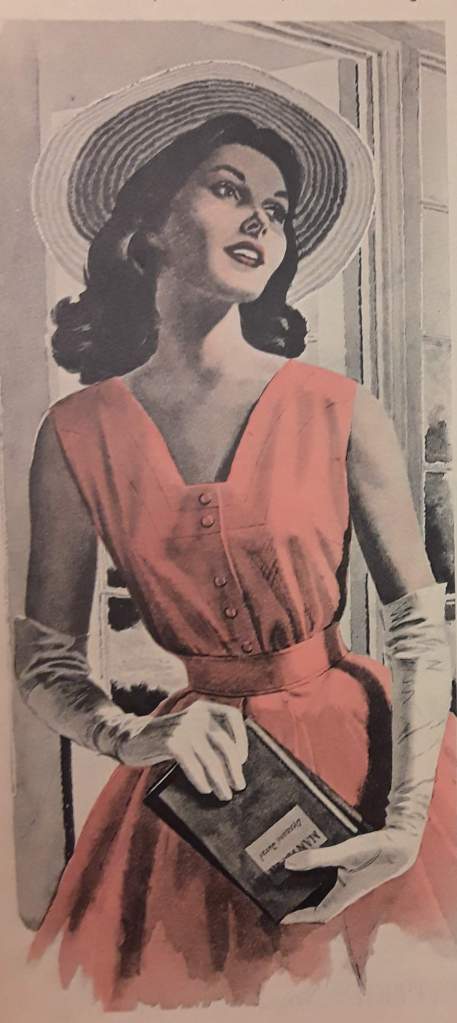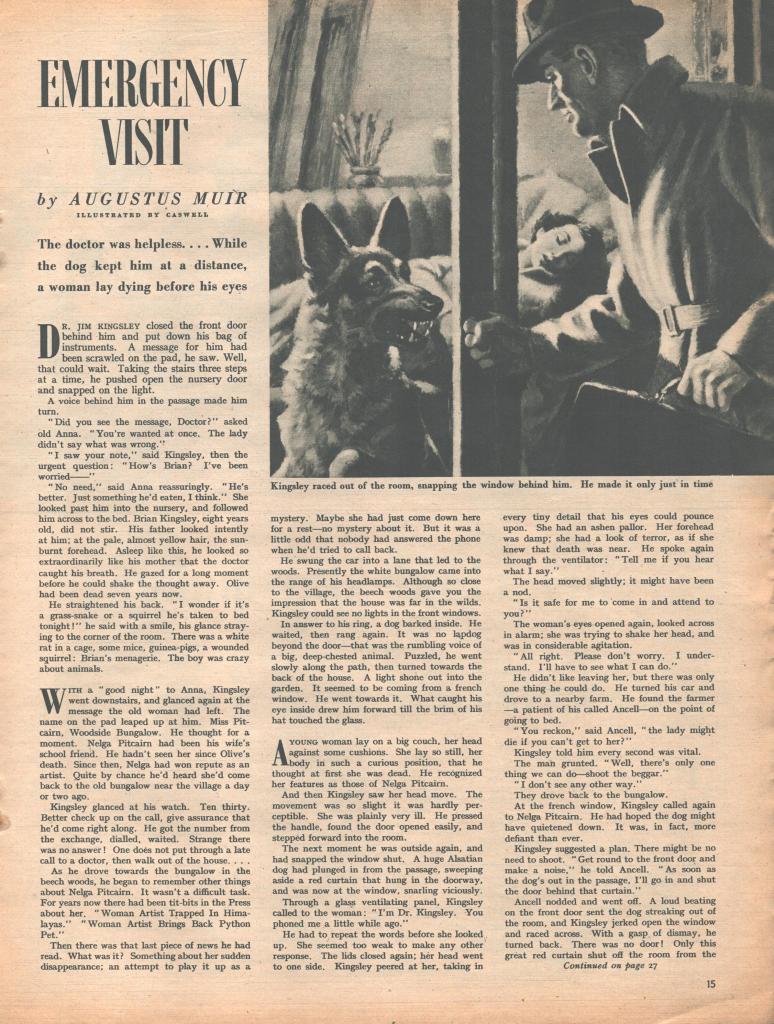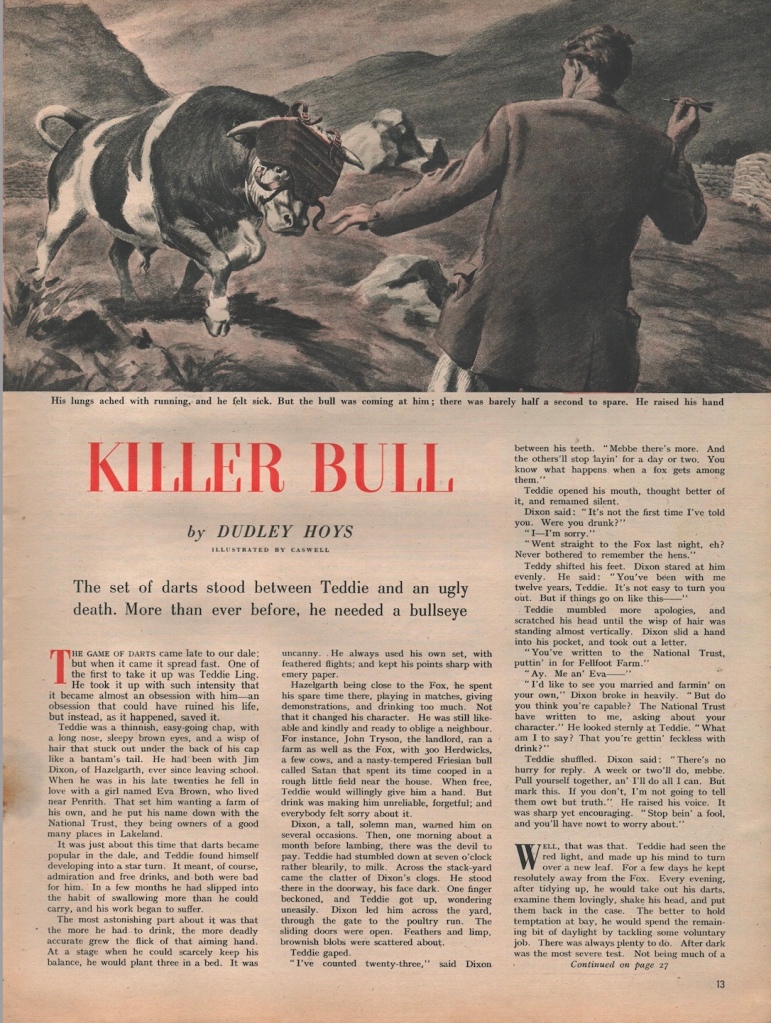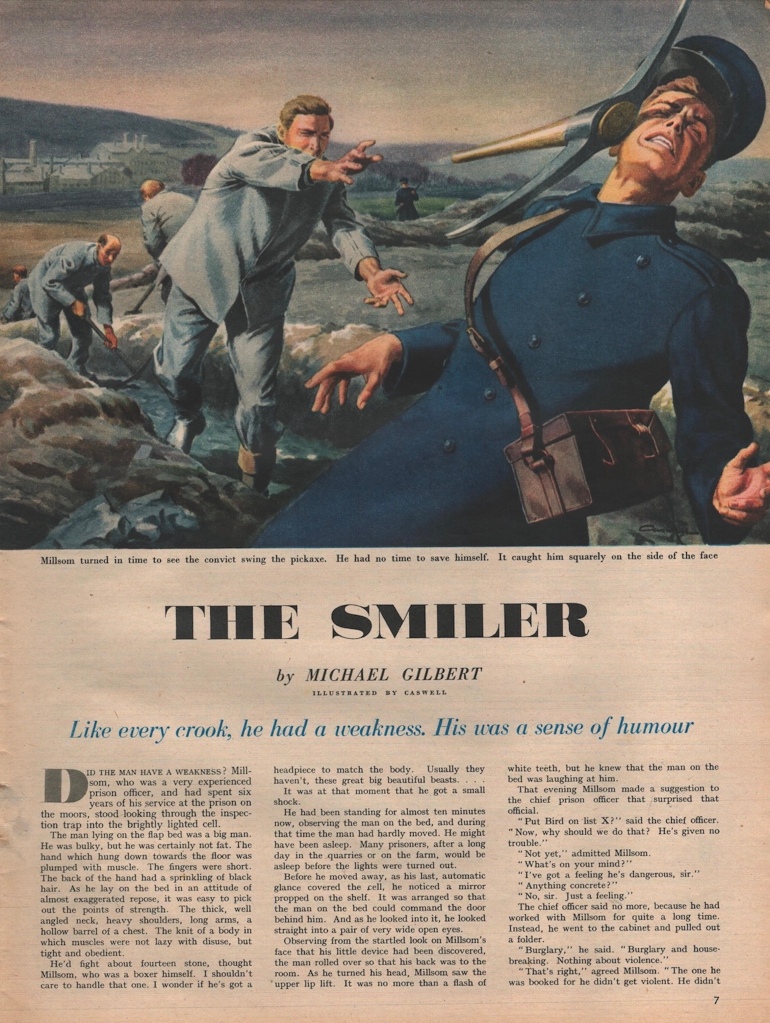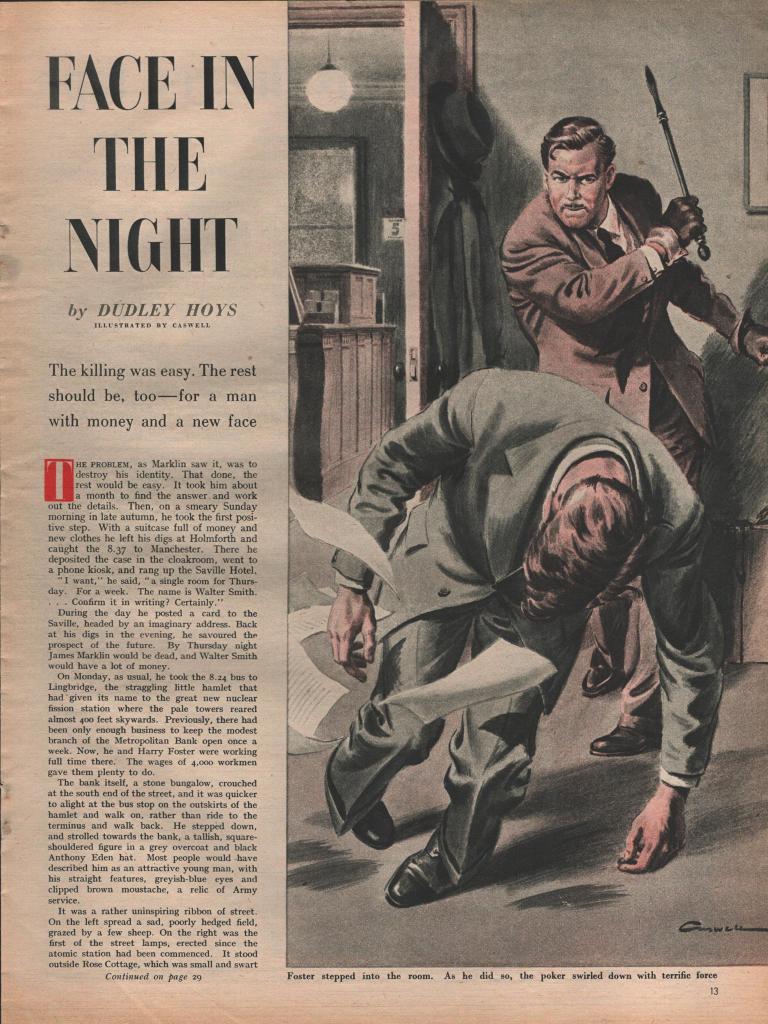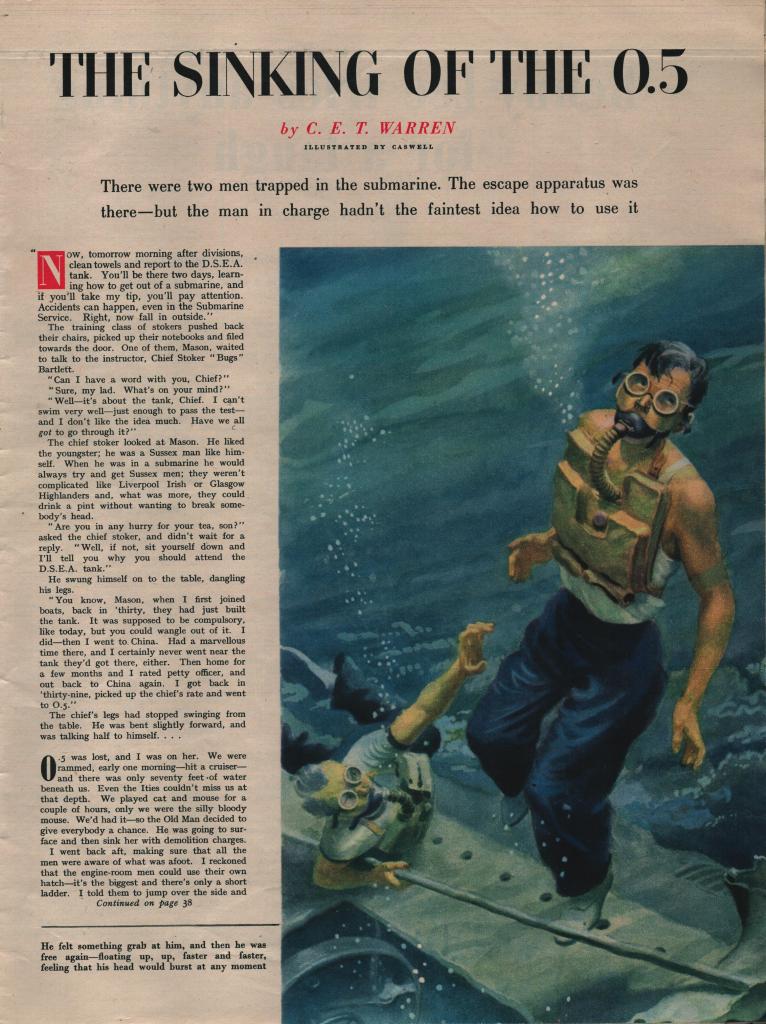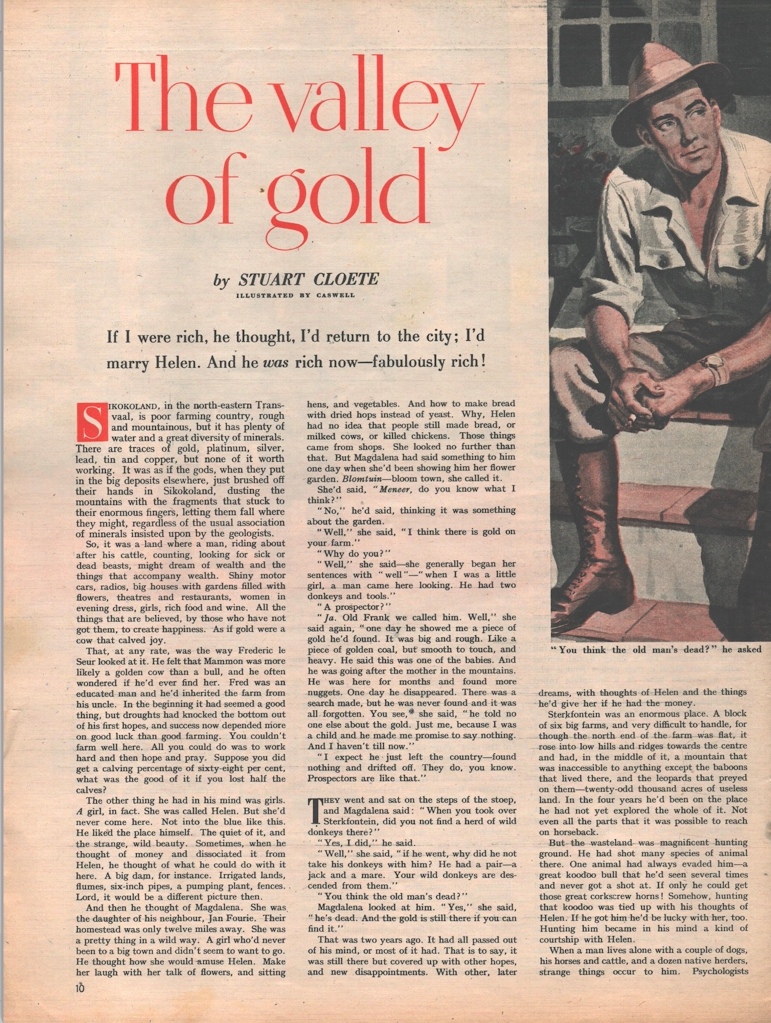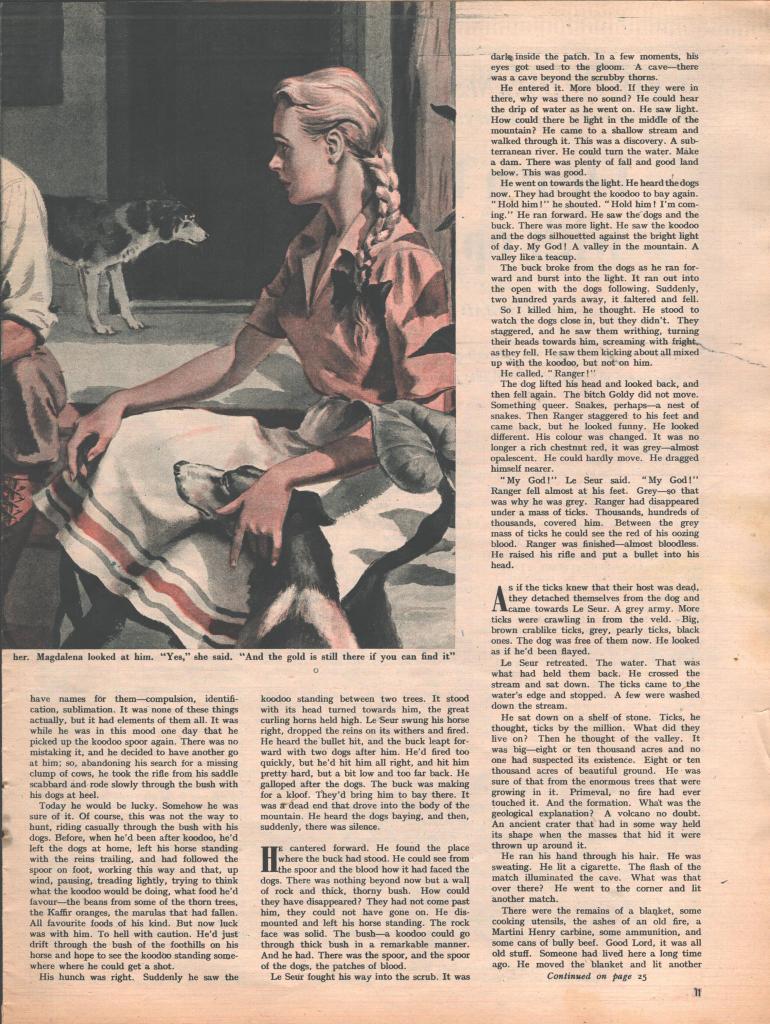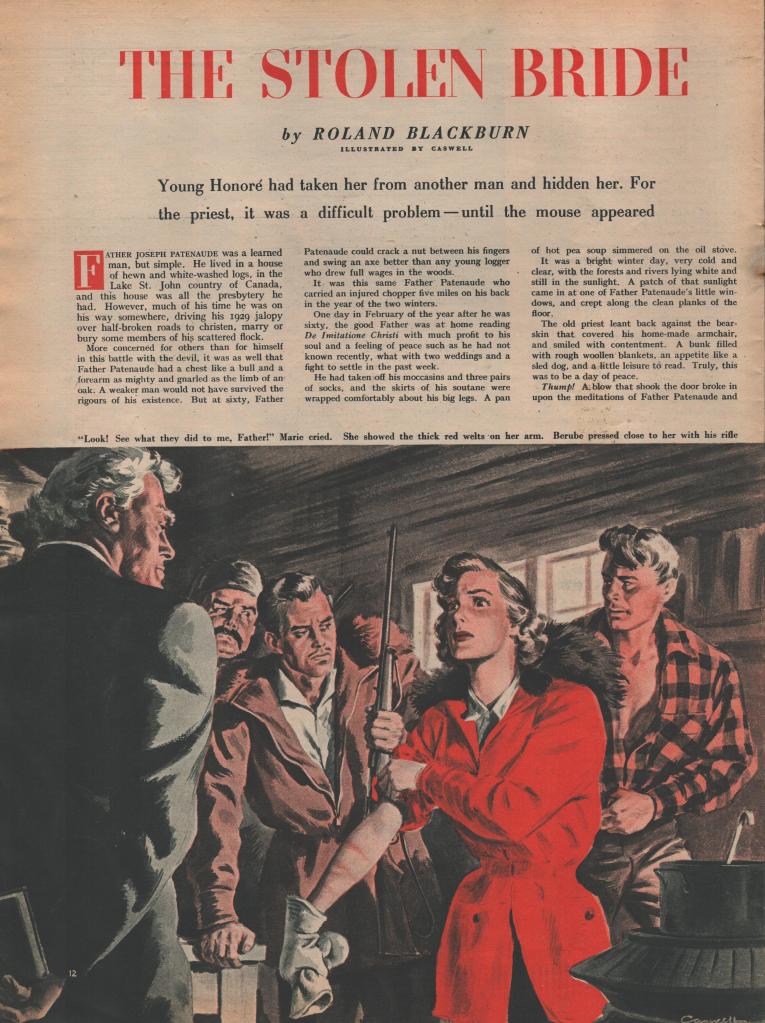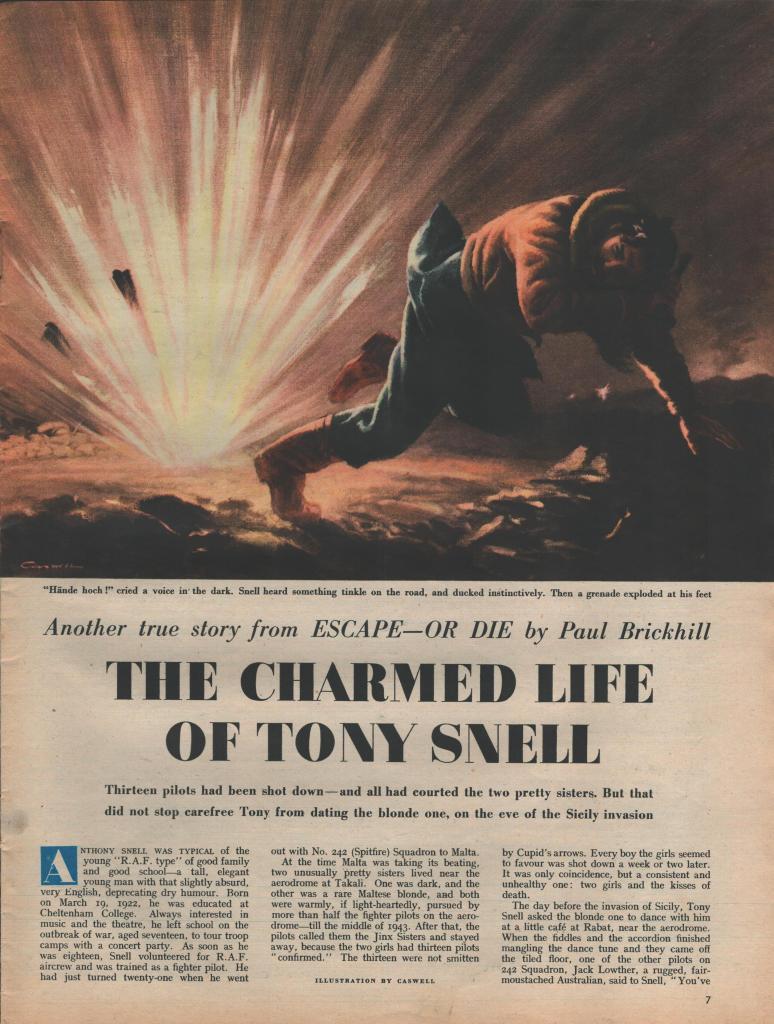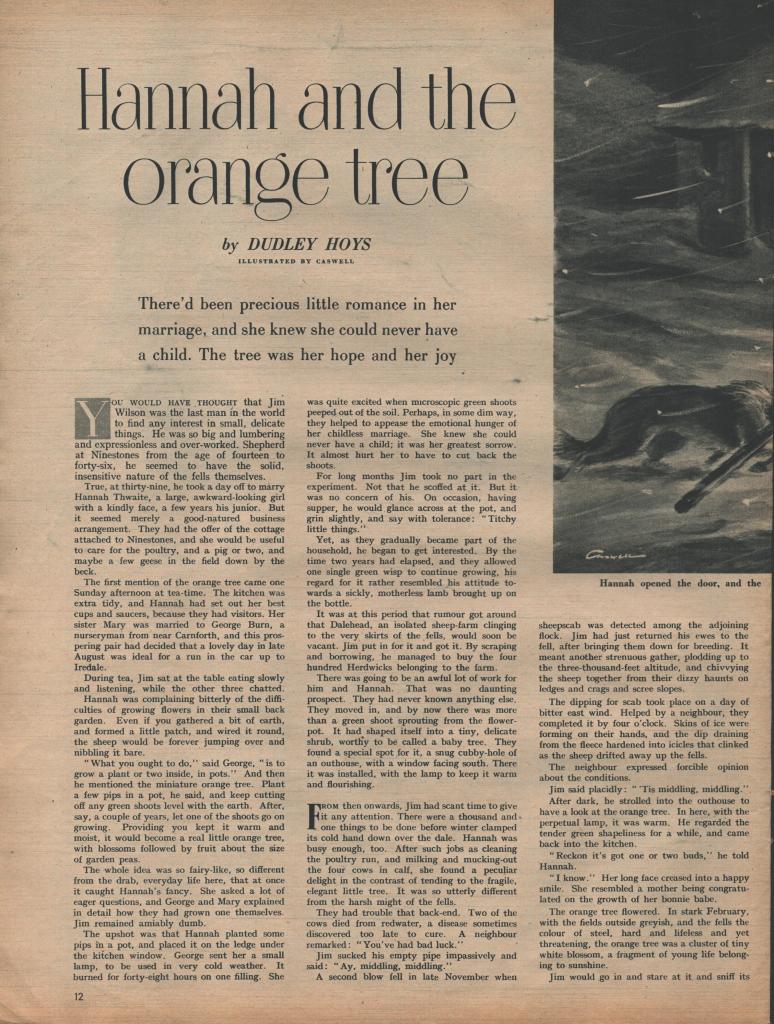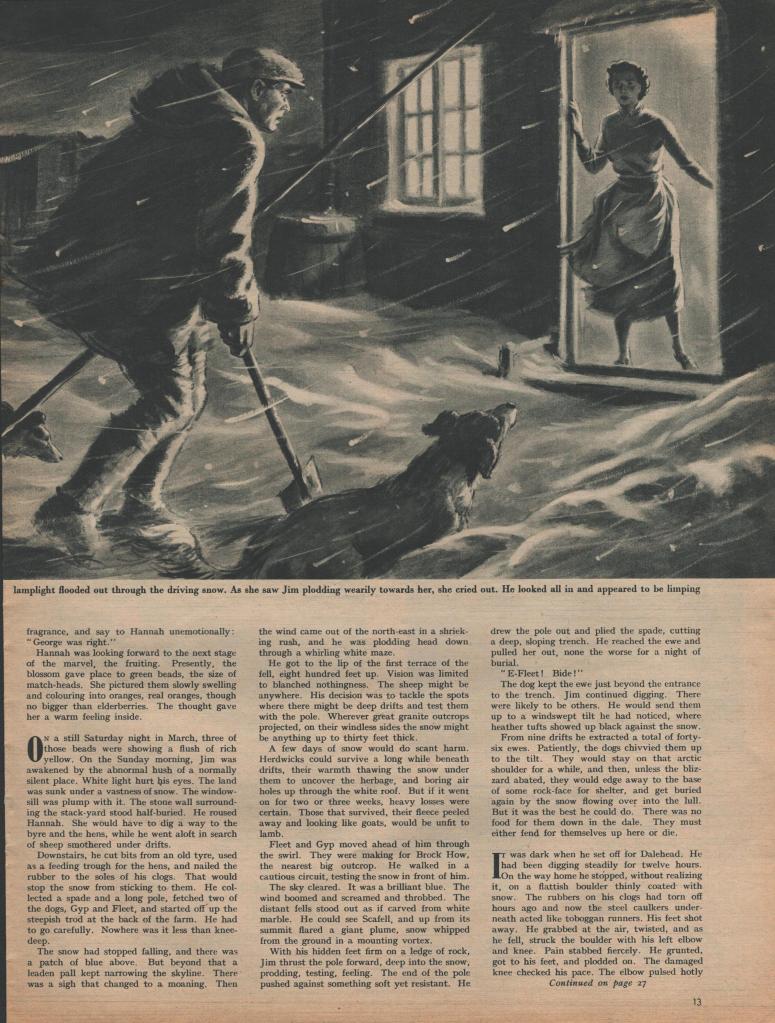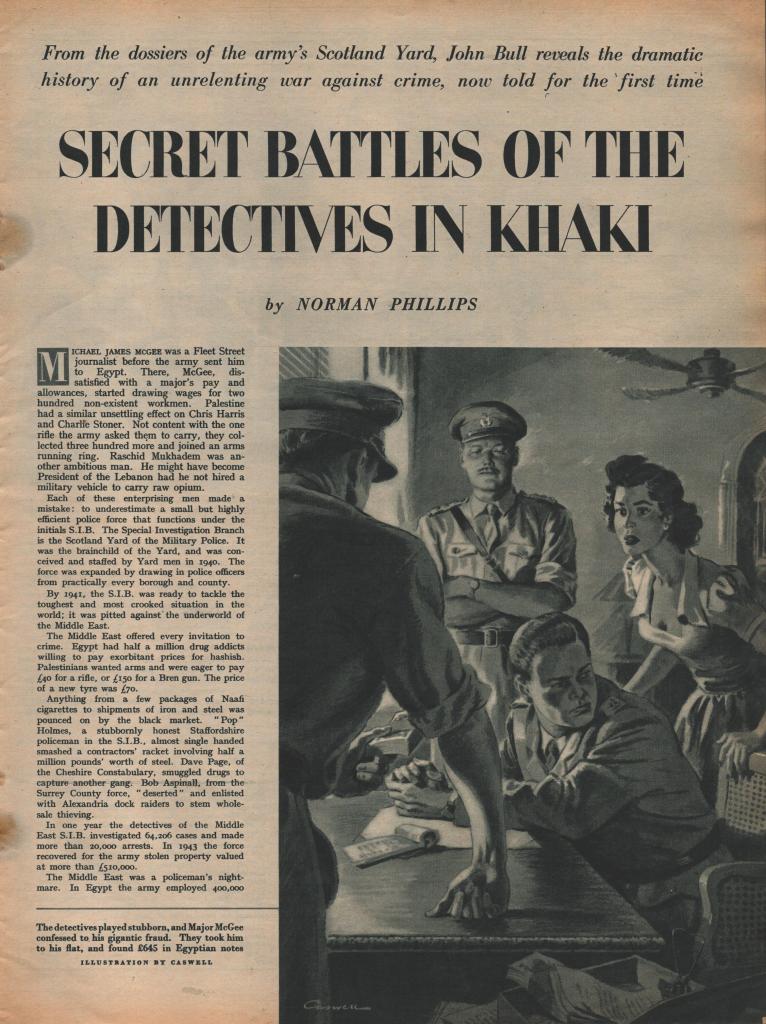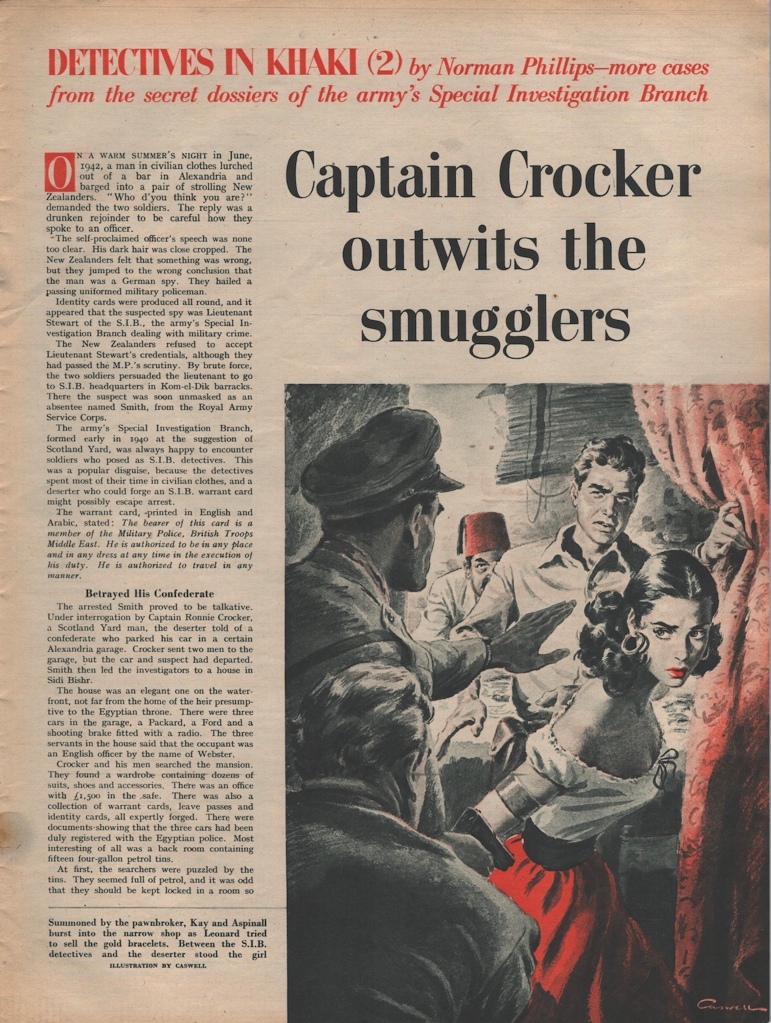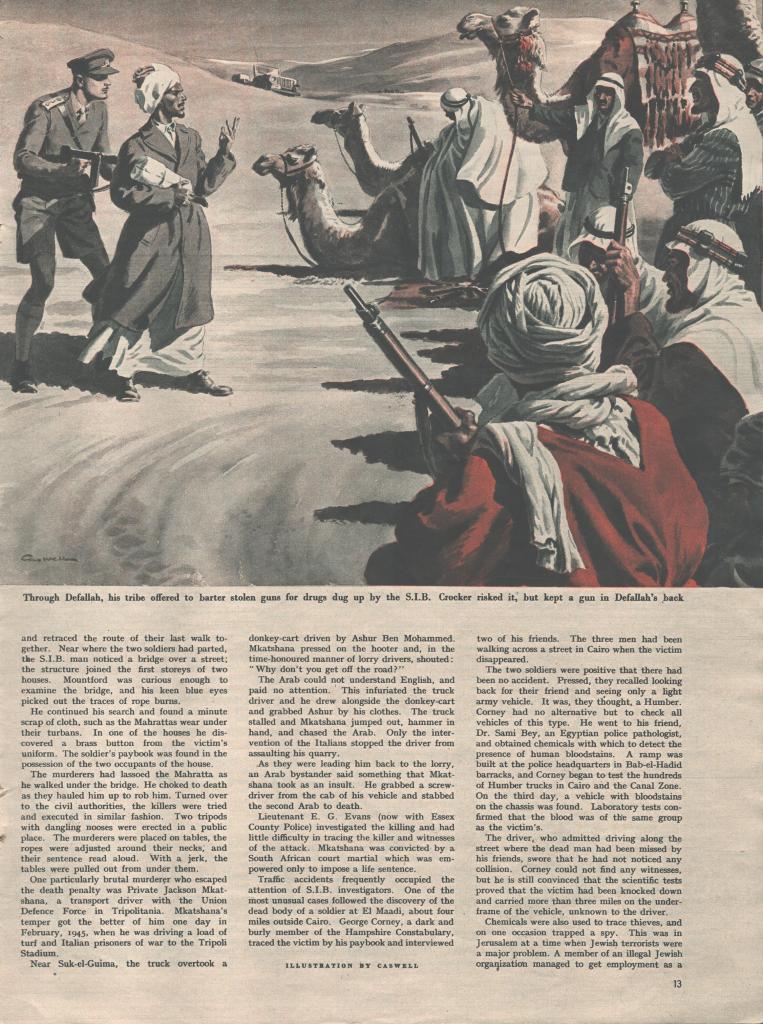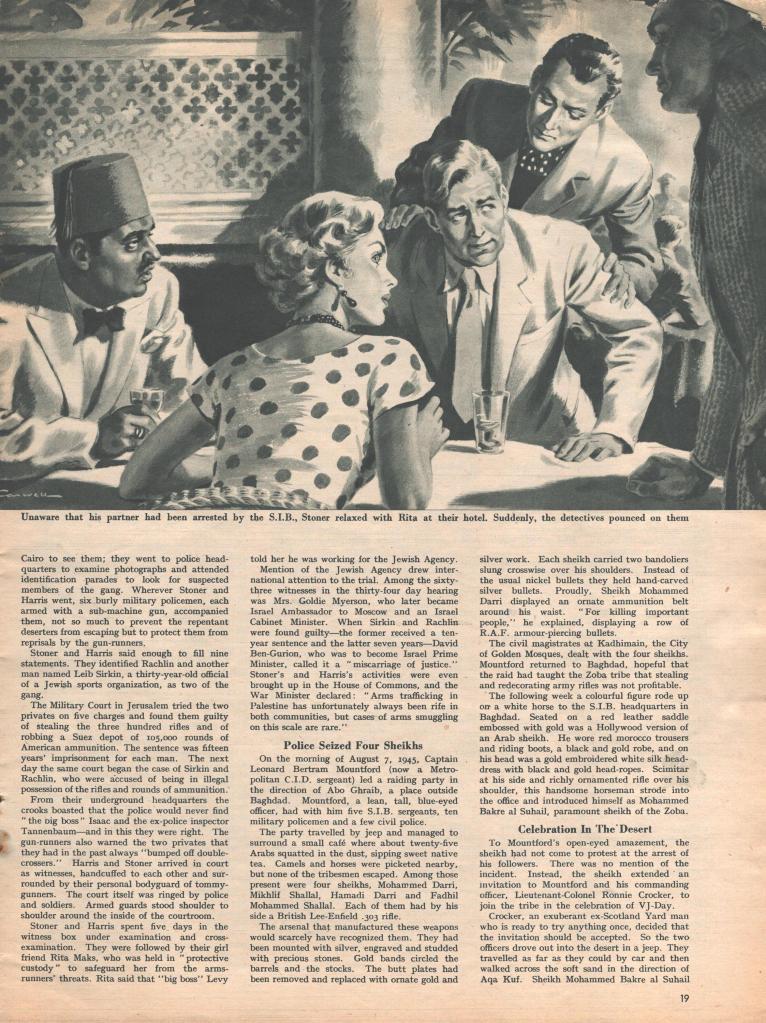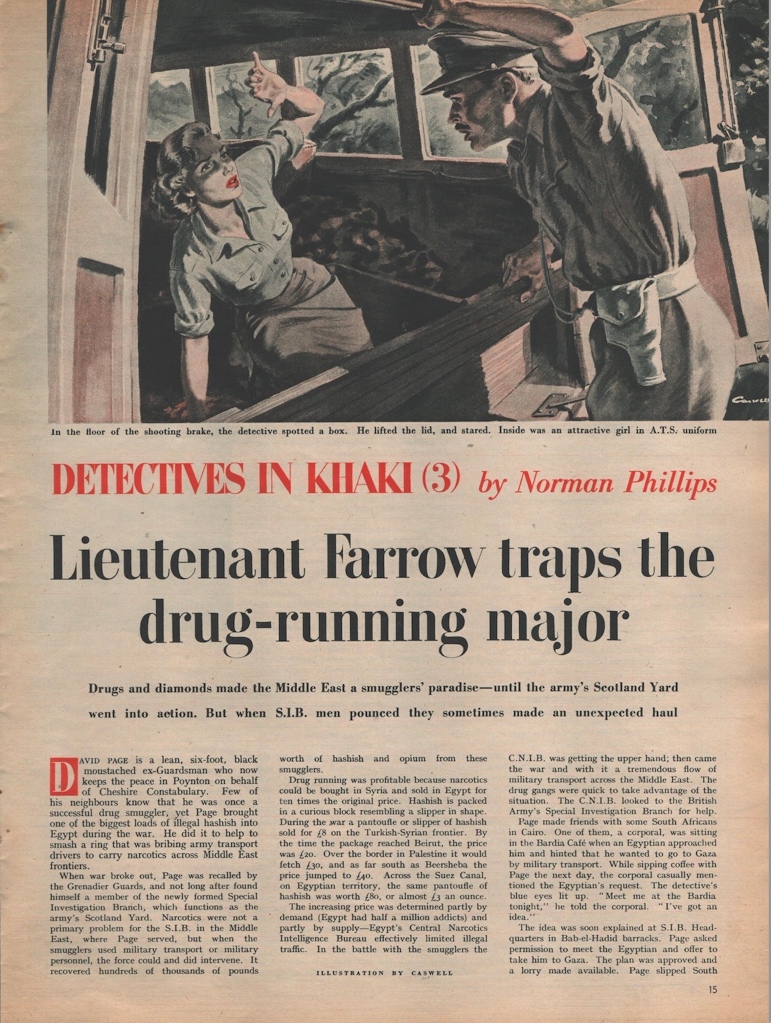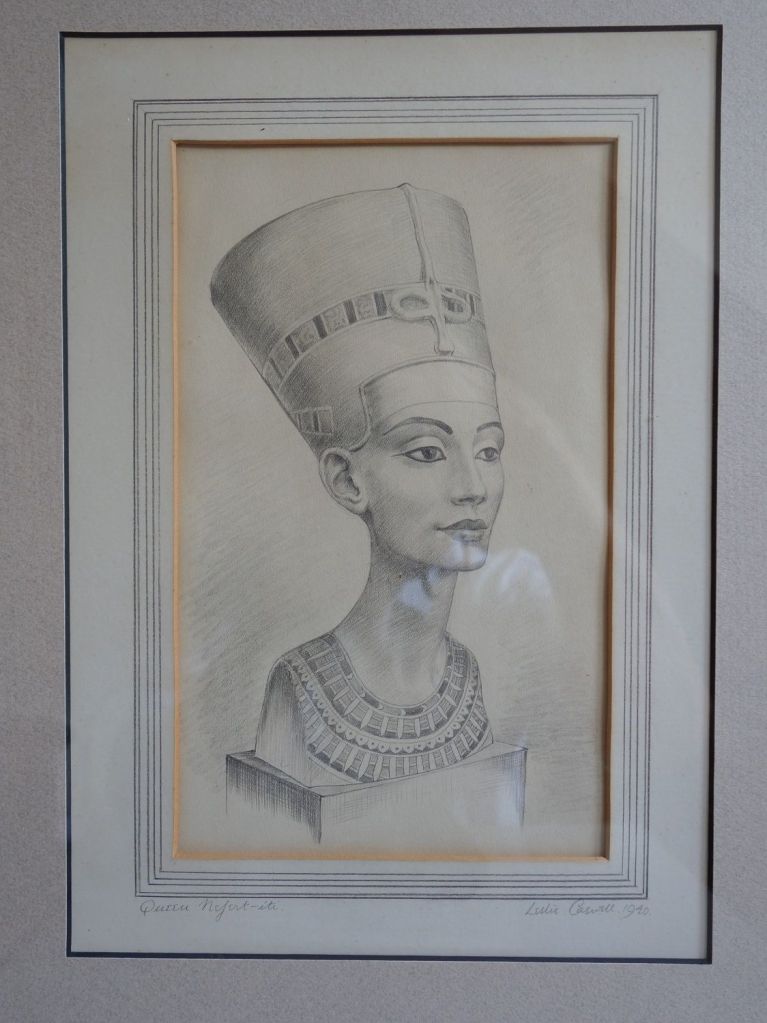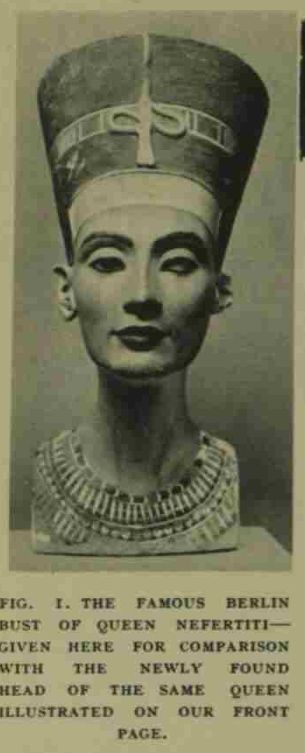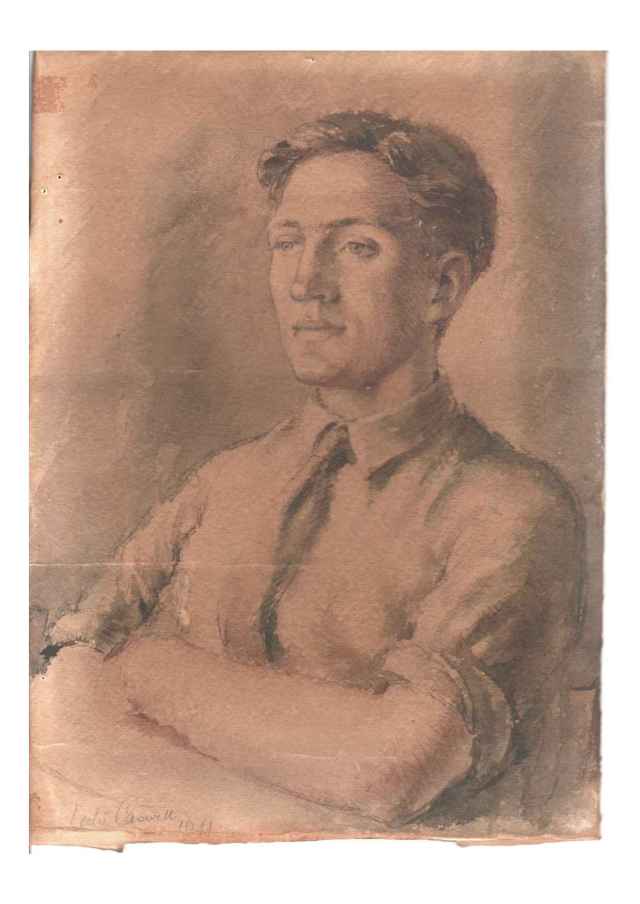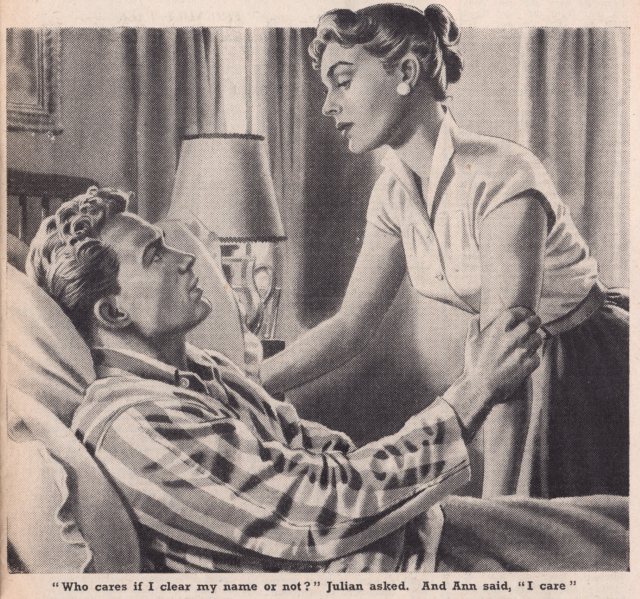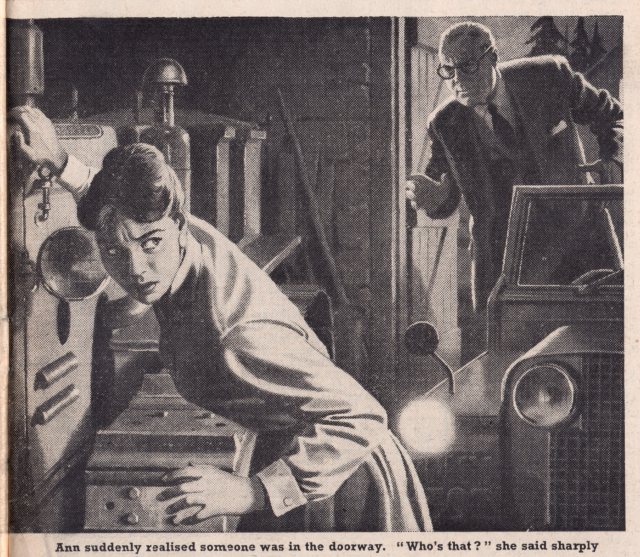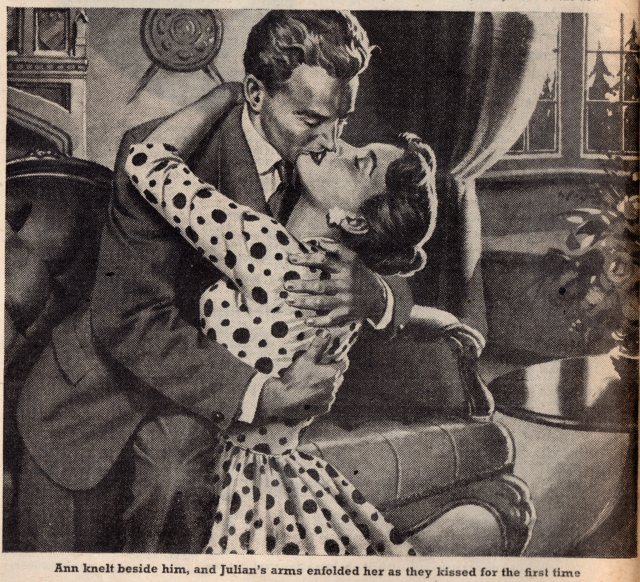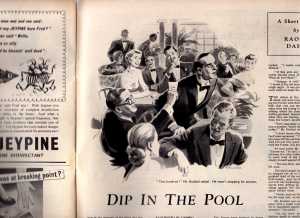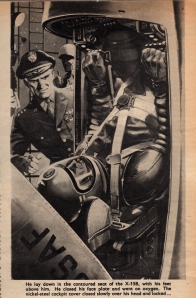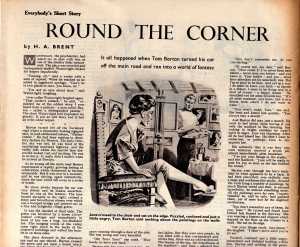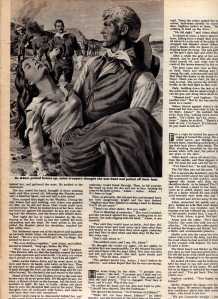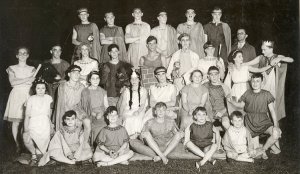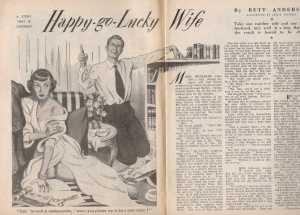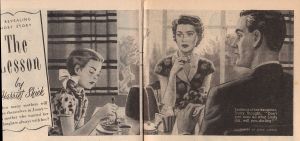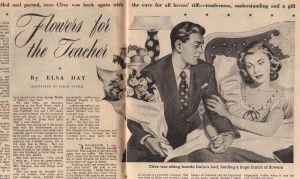A recent research trip (to find a Raymond Sheppard illustration) led to the discovery of some more Caswell artwork. Please forgive the images – all photographed on my Samsung phone and the magazines were bound in single volumes – and I haven’t systematically photographed all Caswell’s images. At least it gives research a chance for anyone who wants to follow this up.
Woman’s Day was a large size, similar to Everbody’s and boasted such artists as Koolman, Uptton, Edwin Phillips, John Batchelor, Jack M. Faulks, Jack Matthew, and of course Leslie Caswell. It began with Volume 1 number 1 on 22 March 1958 and only lasted 173 issues.
“Sitting for love” by D. Y. Rales appeared in Woman’s Day 10 May 1958. The sub-heading to the opening to this story was “The ear-rings tinkled merrily …and the the listeners they sounded like wedding bells”
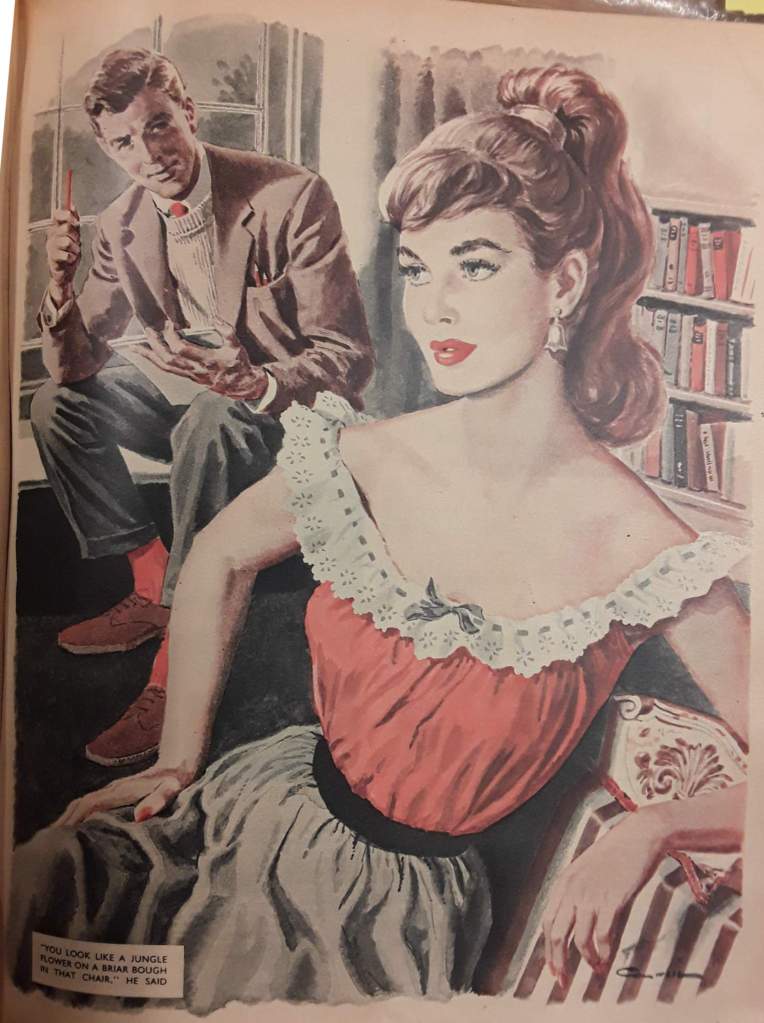
“The Governor’s Daughters” was written by Alex Stuart and covered several issues beginning on 14 June 1958 and concluding in the 16 August 1958 issue
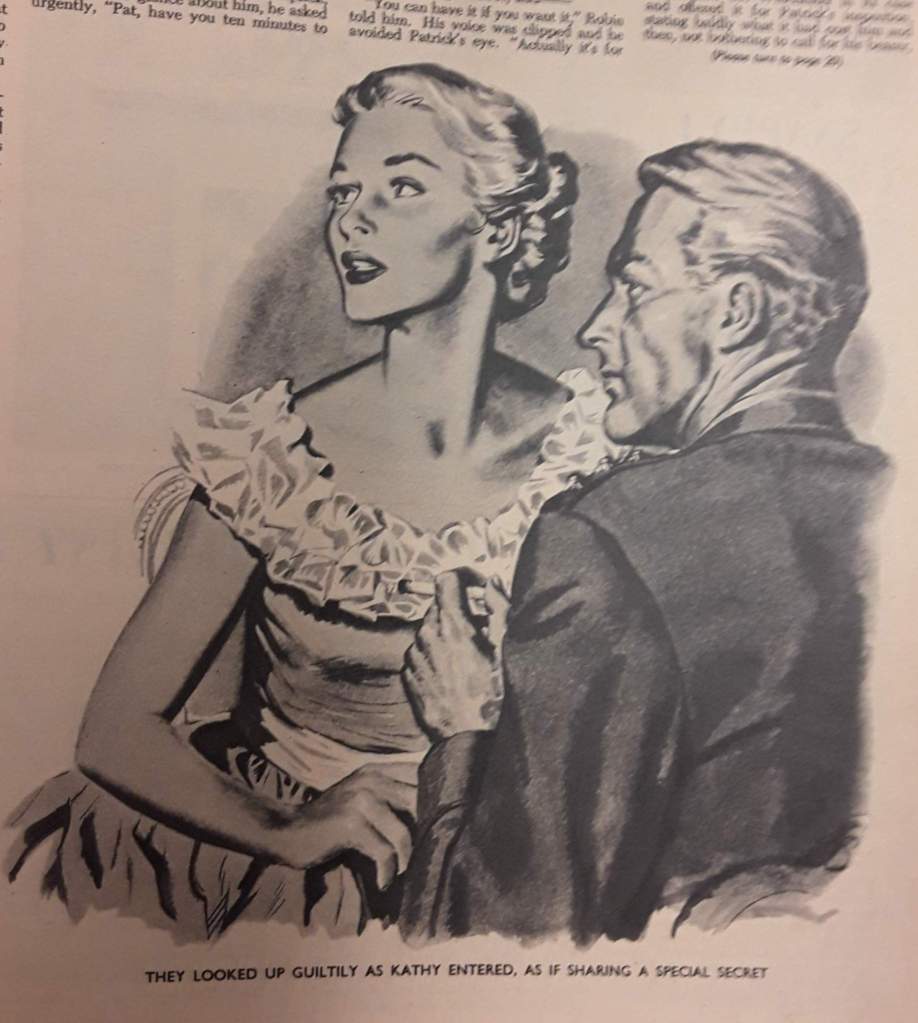
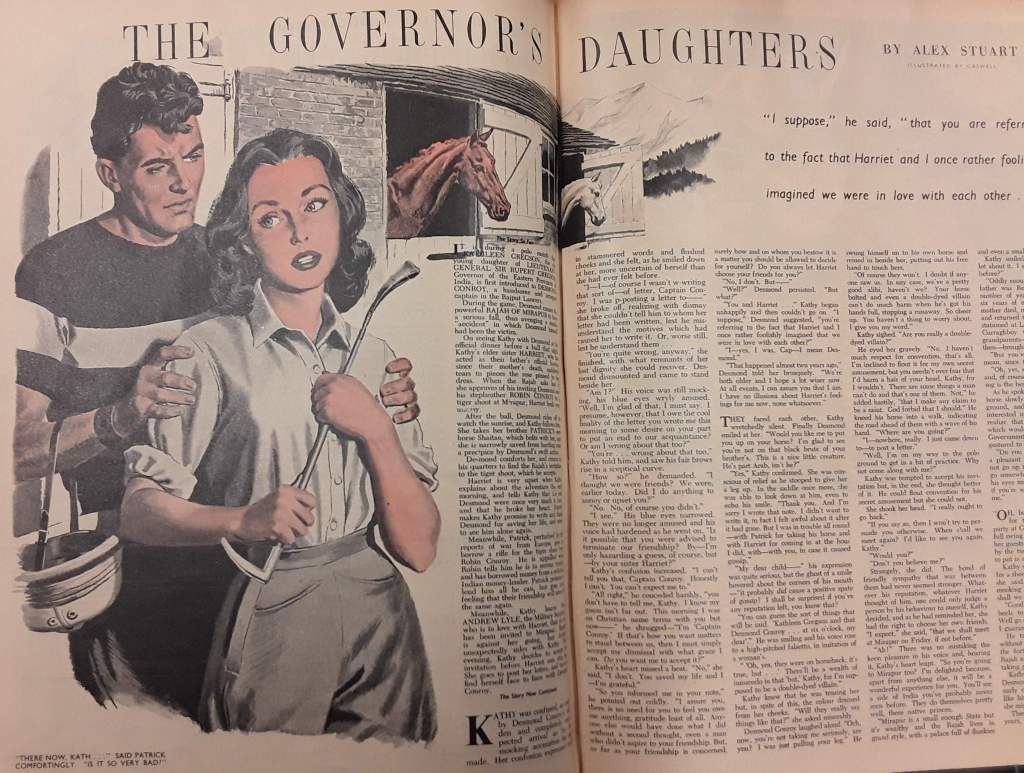
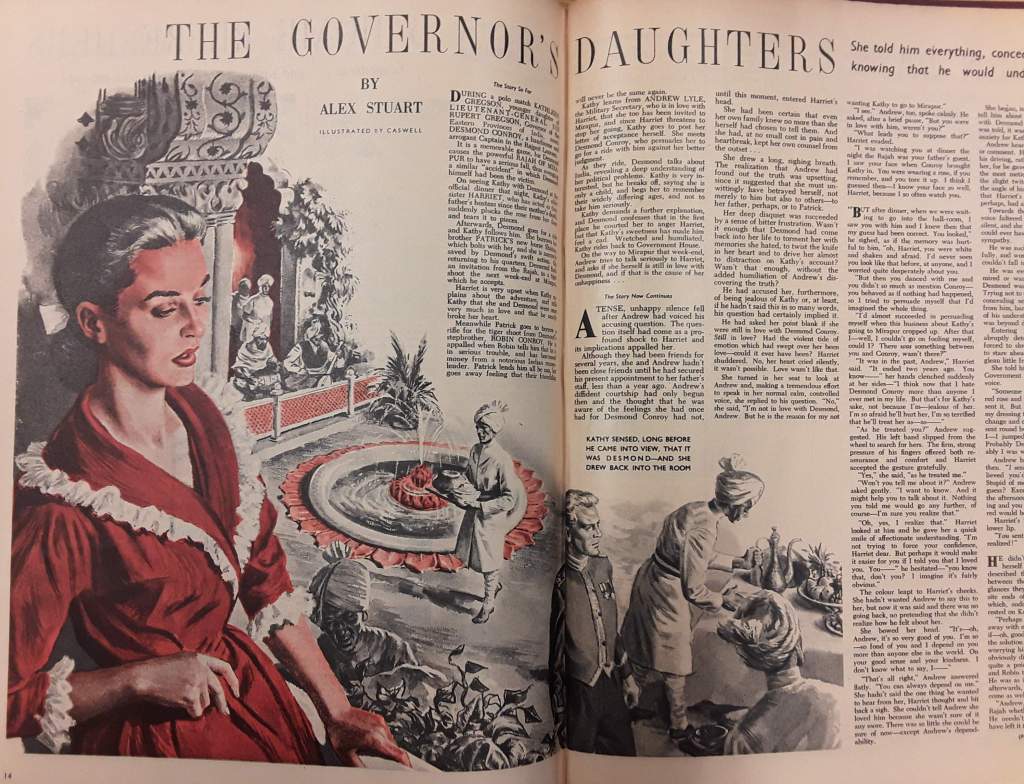
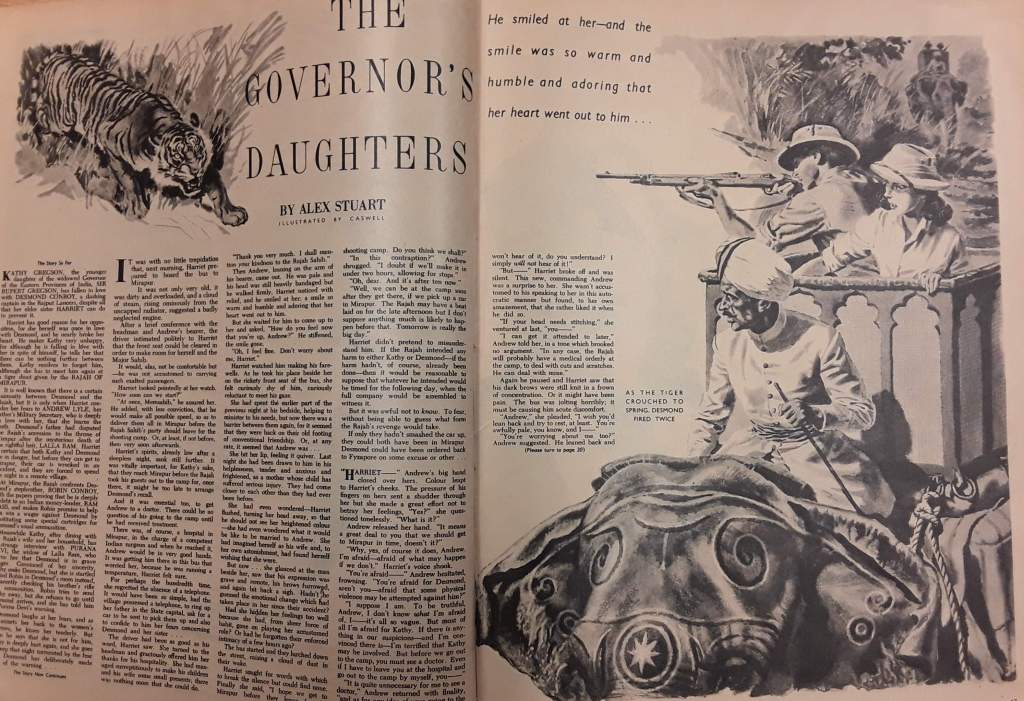
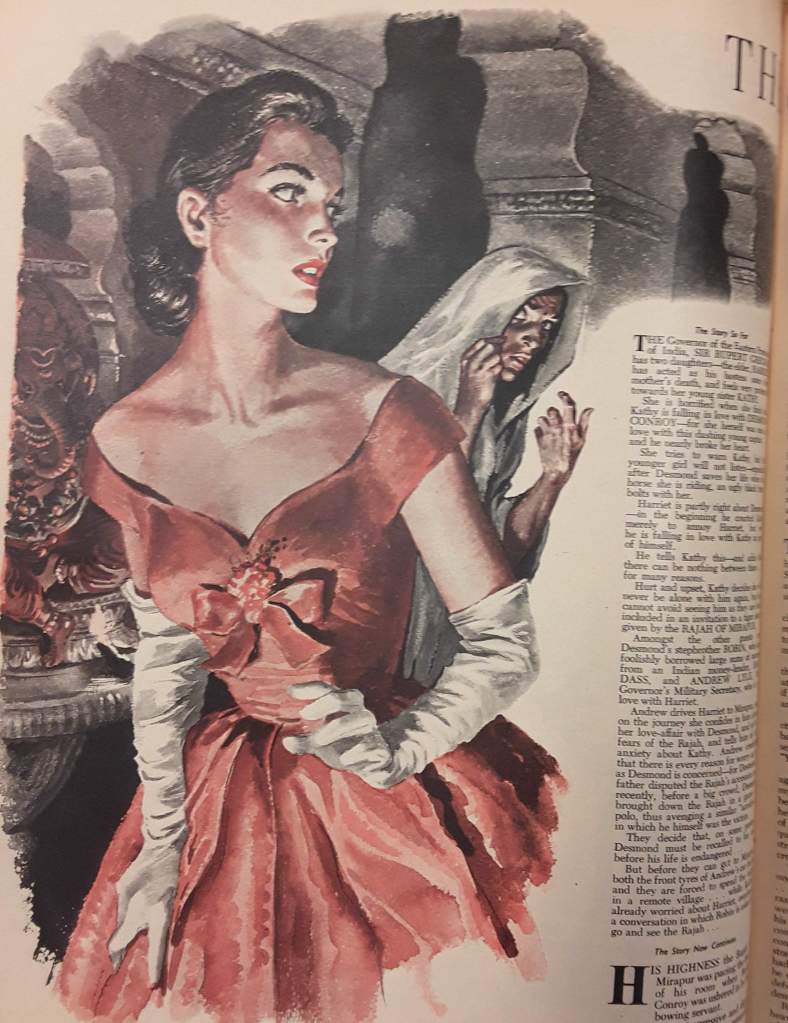
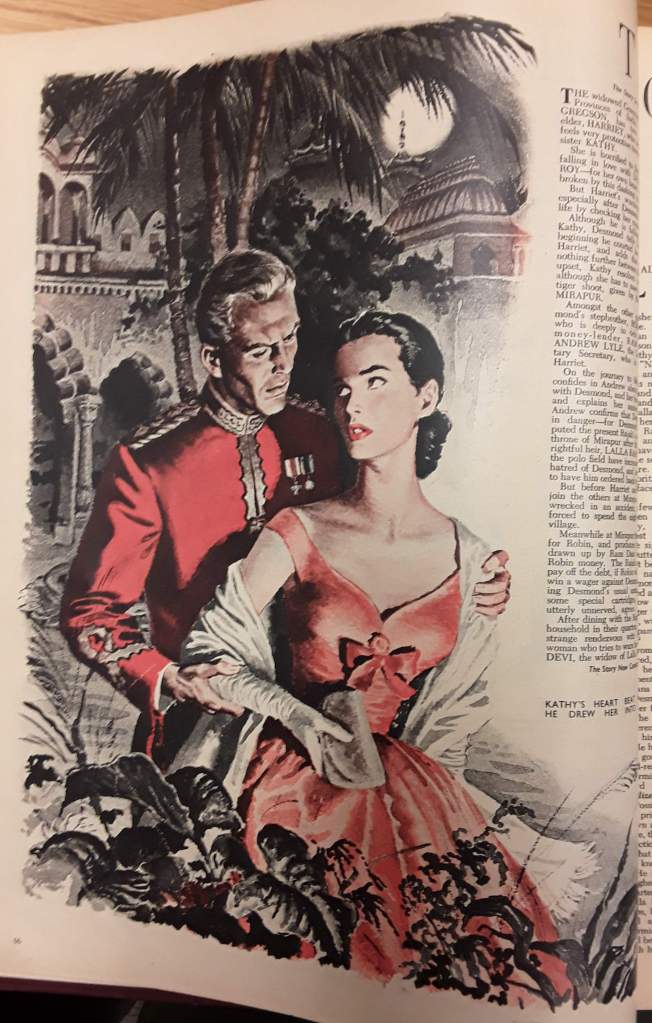
If there’s any doubt that Caswell’s strength was in figure drawing take a look at this tender kiss in the final episode of “The Governor’s Daughters”.
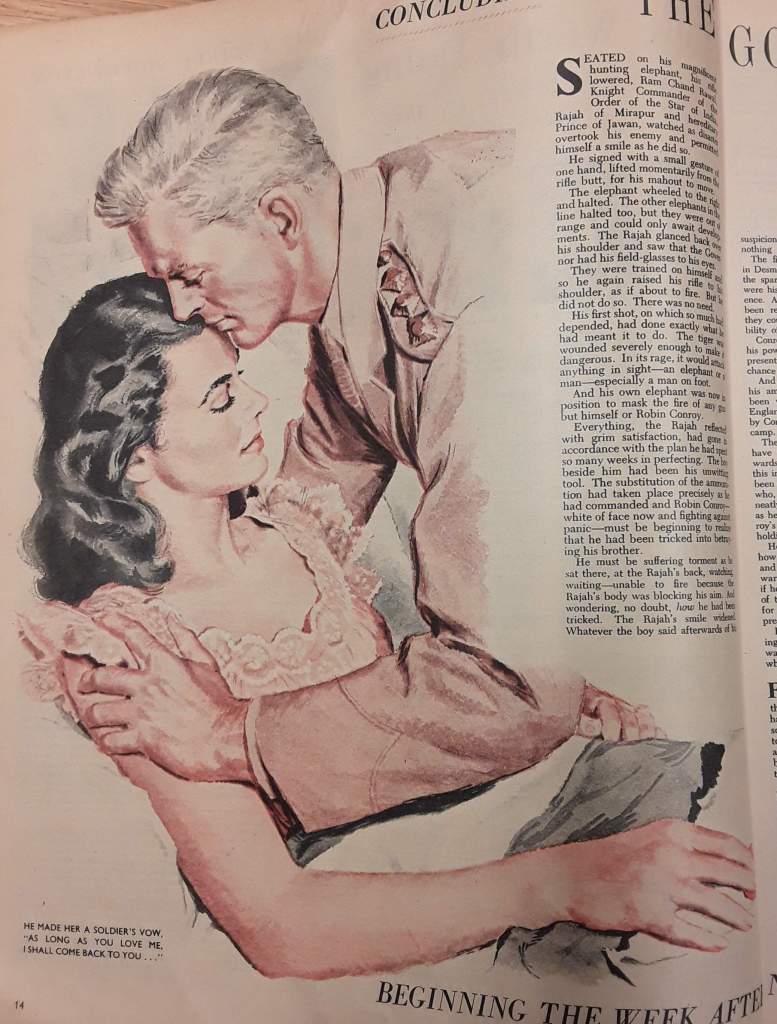
“Angry Young Man” by Edmund Cooper (who I know as a science-fiction writer) was published in the magazine dated 13 September 1958. “It was a talisman …a tiny crystal packed full of wonderful dreams” is the sub-heading.
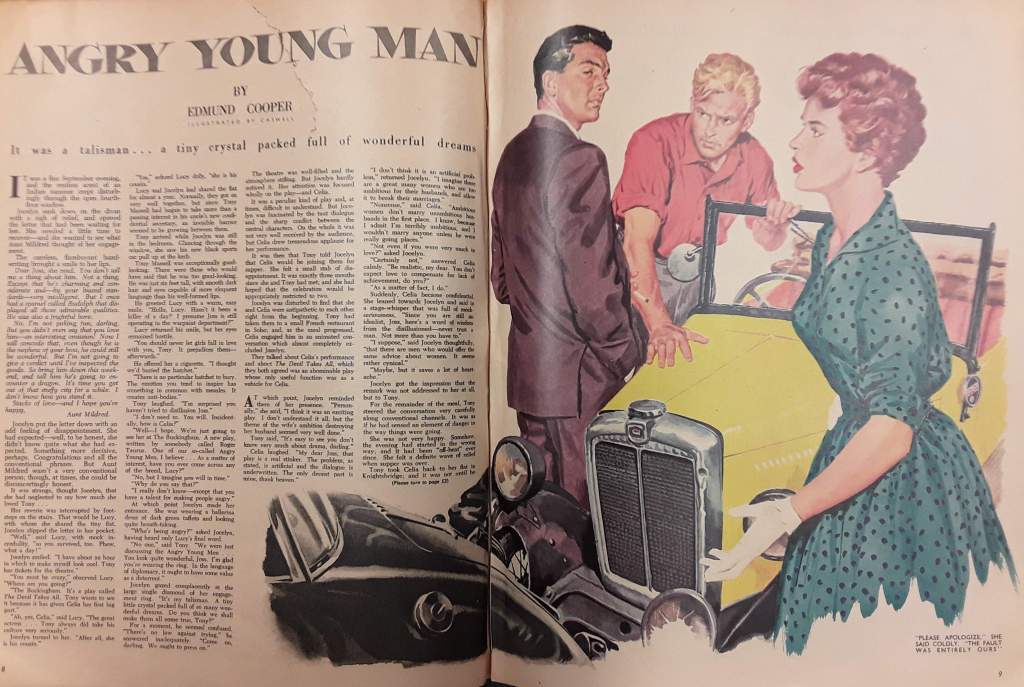
“Charity Child” was written by “Britain’s bestselling romantic novelist”, Sara Seale. The byeline reads: “Even before they met, Mark Gentle mistrusted his aunt’s new companion…had he been more understanding, he might have recognised her generous heart – and innocent intention” It began in the 11 October 1958 issue and ran until 29 November 1958 with some lovely Caswell illustrations to accompany it.
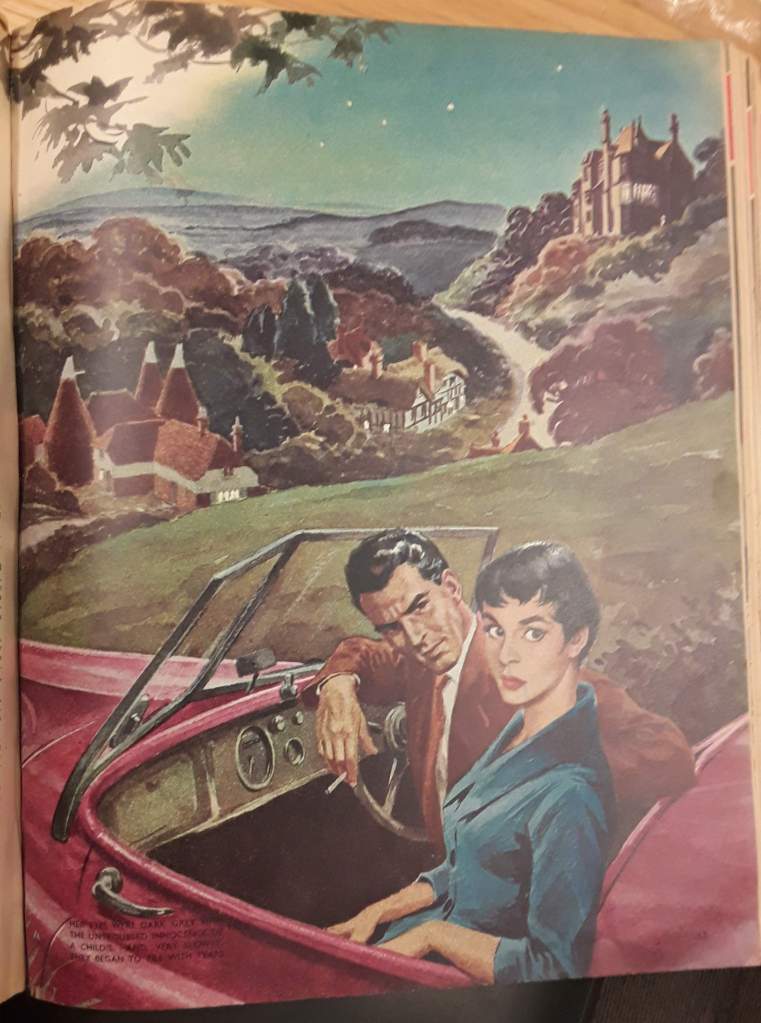
Look at these character studies – it makes you want to read the story! AS soon as I saw the character Charity, I thought of Shirley Maclaine.

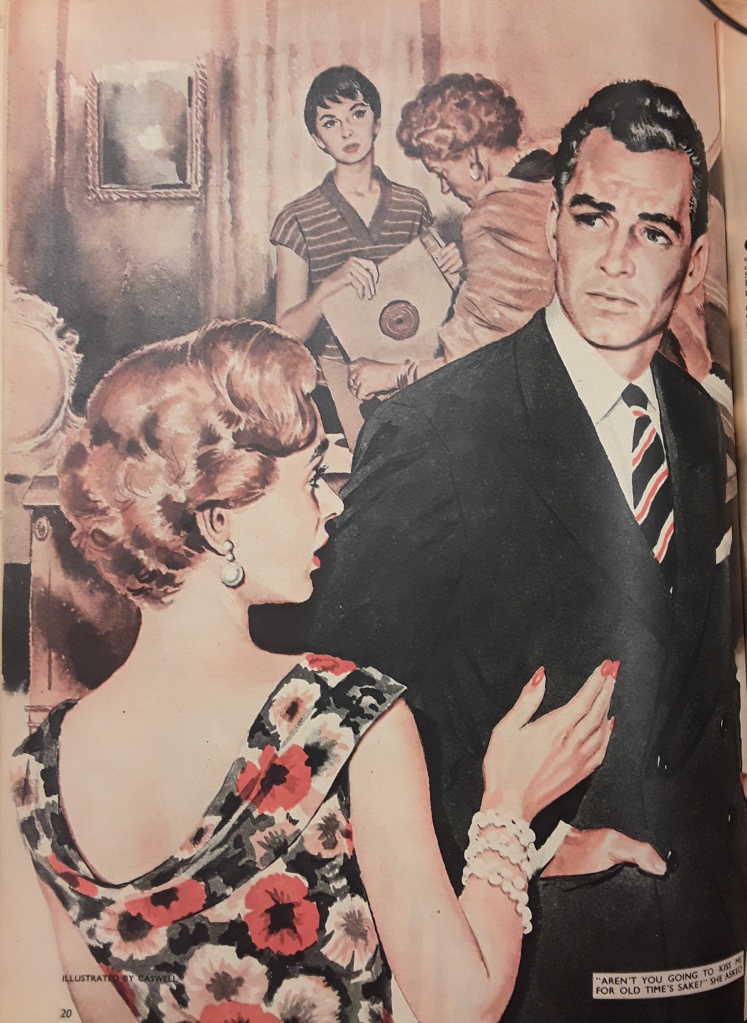
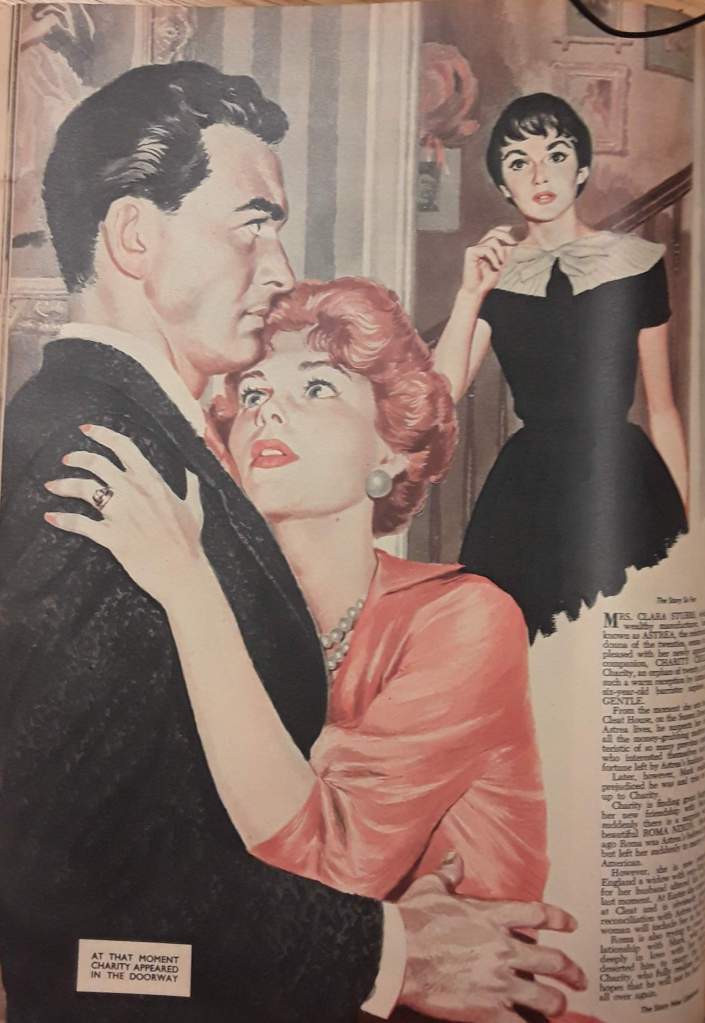
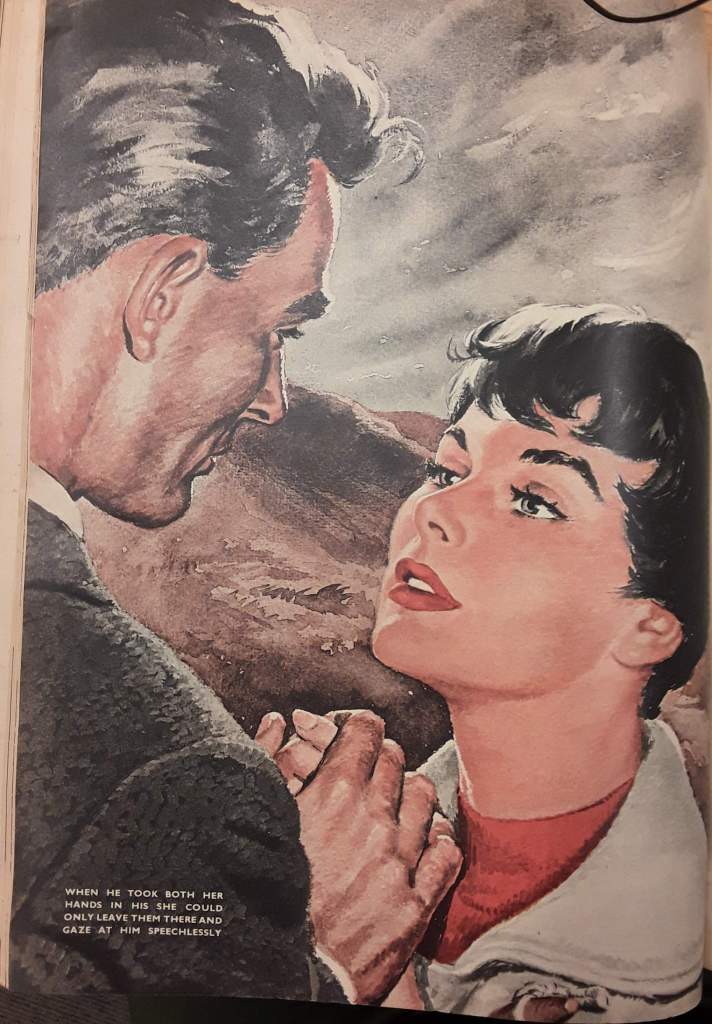
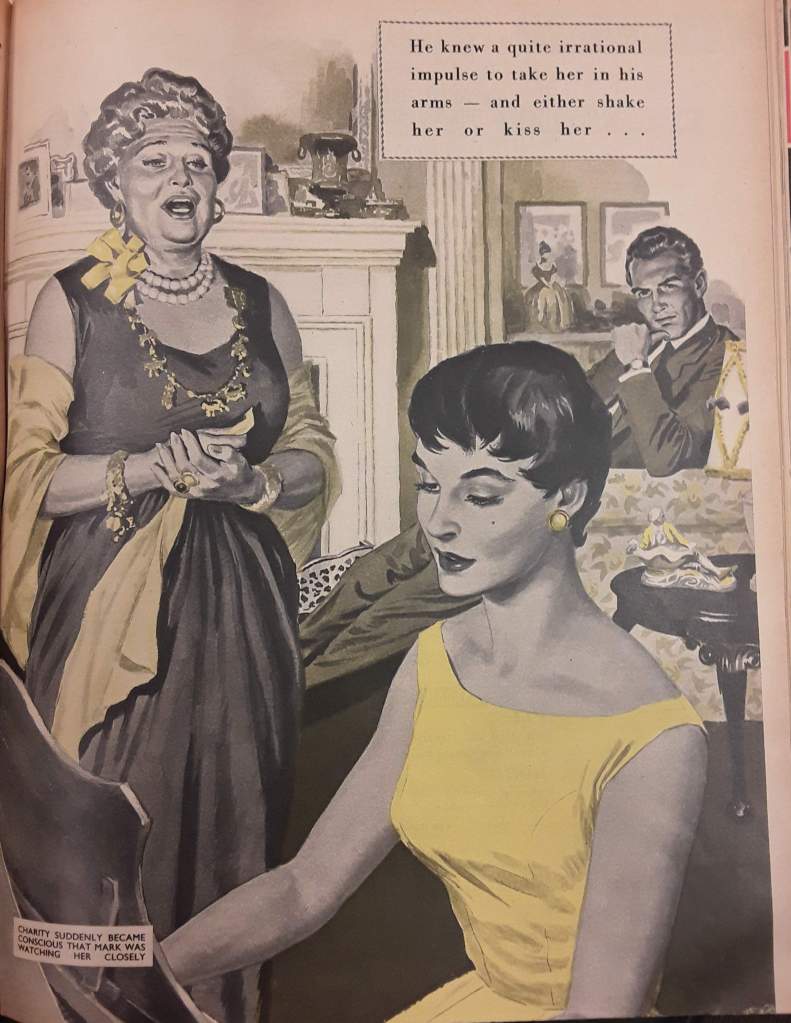
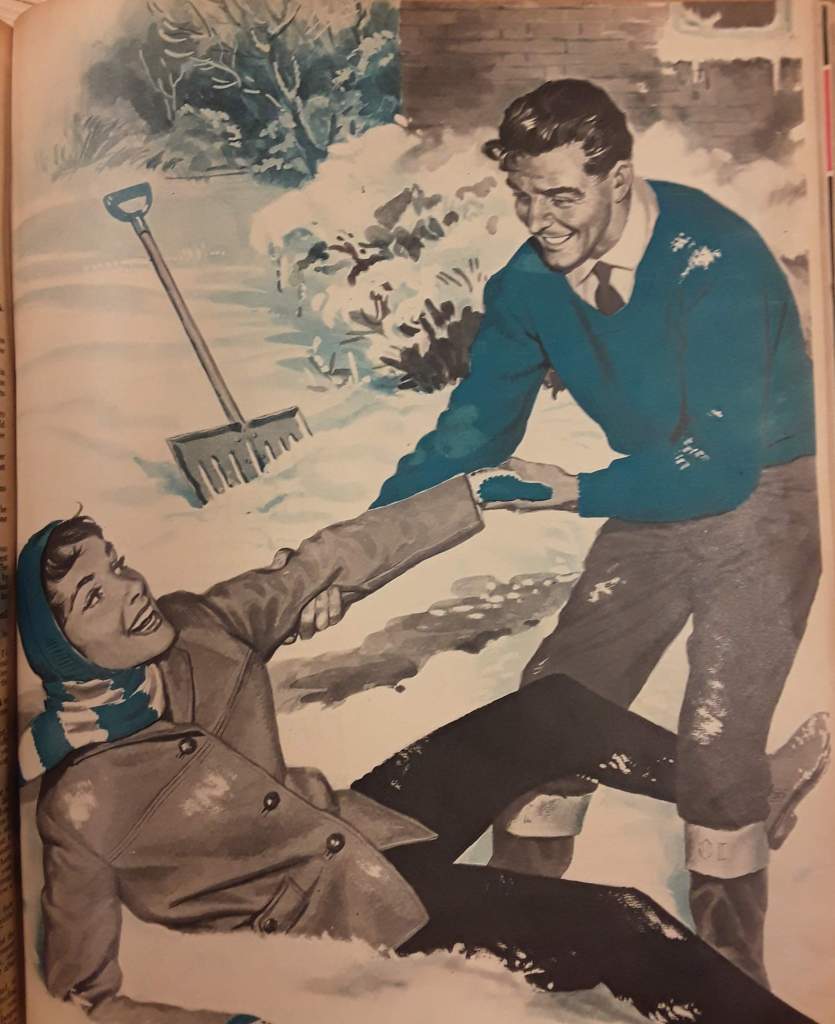
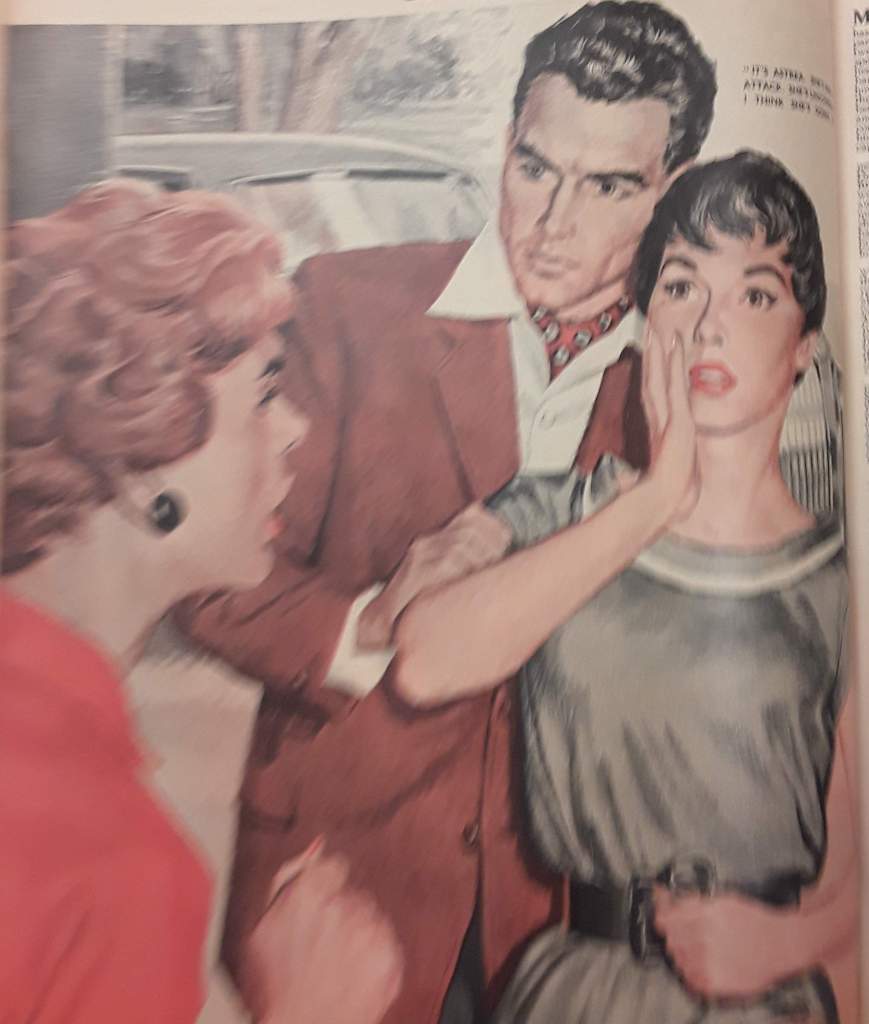
and the concluding drawing has a lot of impact
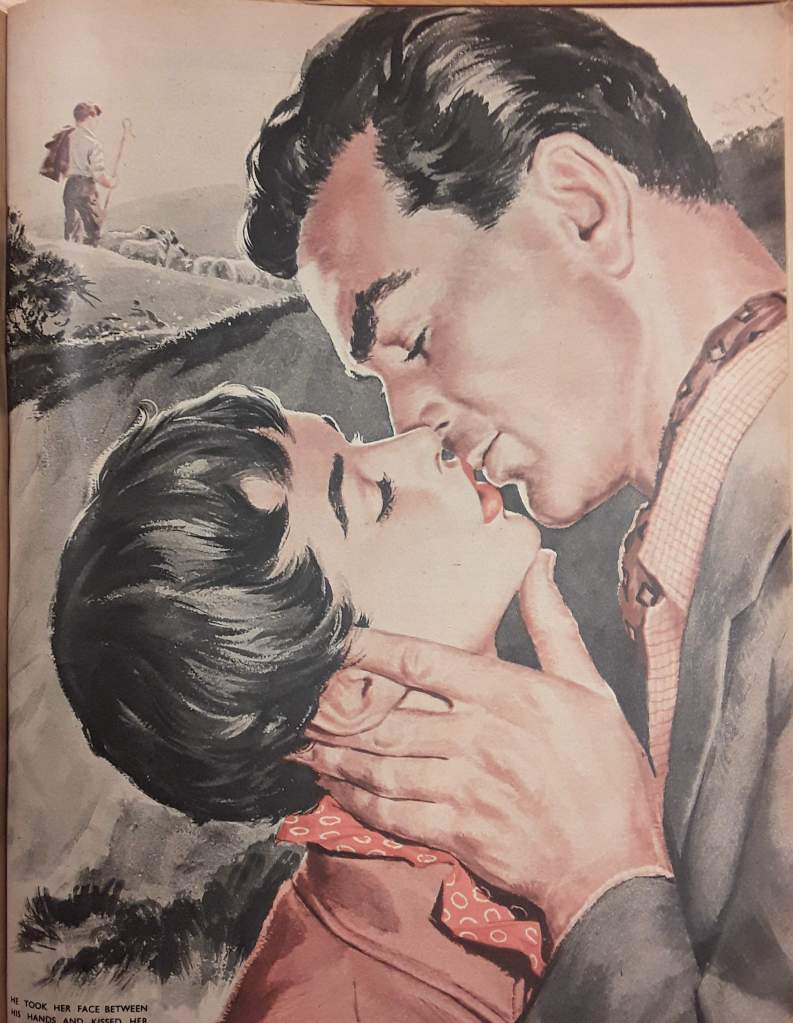
Lastly here’s the last image I copied from Woman’s Day 27 December 1958 which illustrates the story “The Gimmick” by Jill Gill
